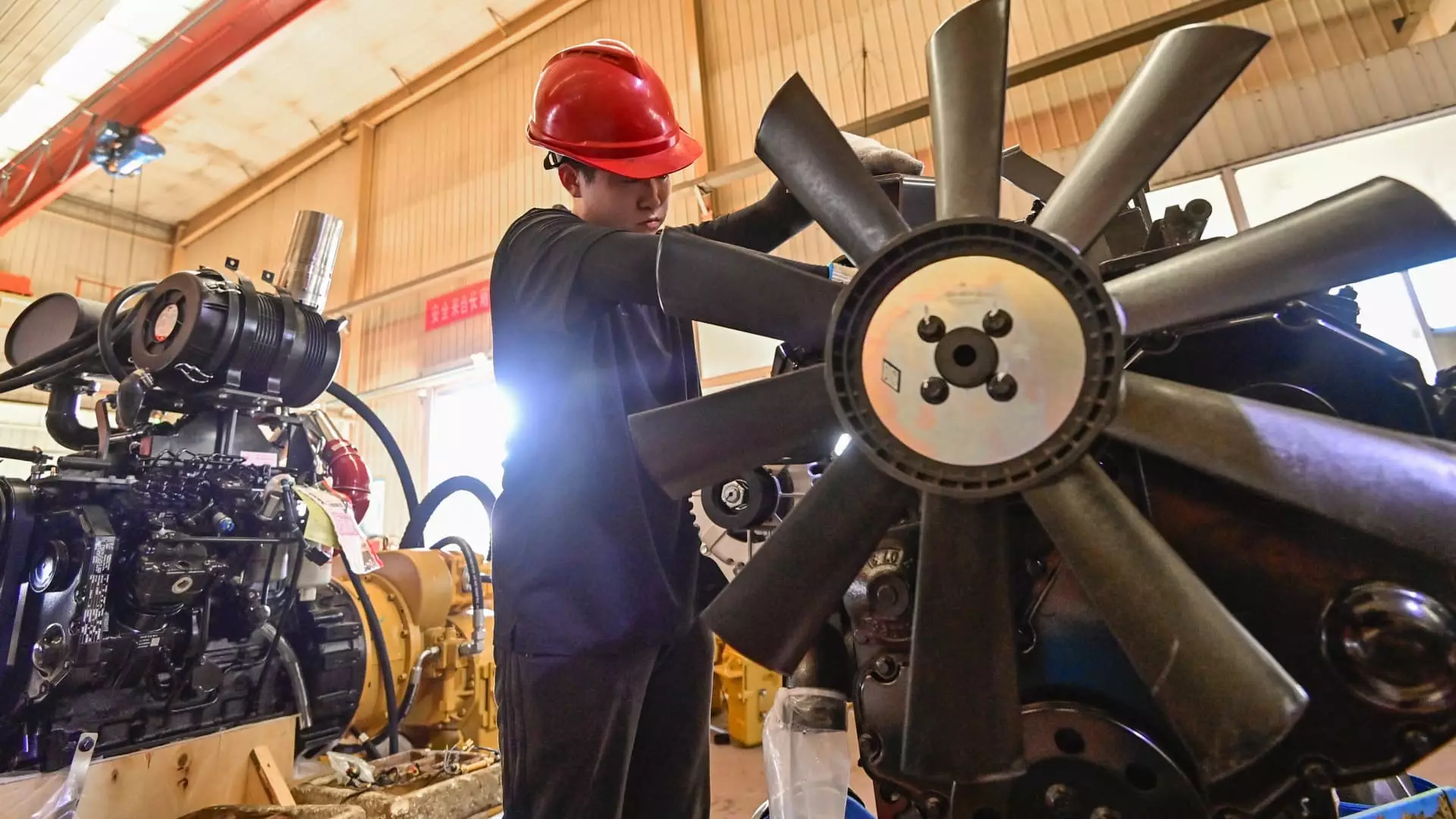In October, China’s manufacturing sector demonstrated a notable shift in momentum, particularly among smaller enterprises. This observation stems from the Caixin/S&P Global manufacturing purchasing managers’ index (PMI), which registered at 50.3. This figure surpassed the anticipated 49.7 predicted by analysts in a Reuters poll and suggested a rebound from the previous month’s reading of 49.3. The PMI value is paramount since it serves as a critical indicator of economic health; any value above 50 signifies expansion, while below that threshold denotes contraction.
Moving beyond mere numerical values, it’s essential to understand what these shifts indicate about the underlying factors in China’s economy. The private PMI data, which primarily includes smaller private and export-oriented firms, often provides a more nuanced view compared to the official PMI, which is generally representative of larger, state-owned entities.
The uptick in the PMI is largely attributed to an increase in both supply and demand. According to Wang Zhe, a senior economist at Caixin Insight Group, the overall market demand has shown signs of recovery alongside steady growth in production. This signals a potential turning point, highlighting that conditions may be improving for manufacturers, at least in certain sectors.
Furthermore, this optimism is partly driven by a rise in new orders, which have surged at their fastest pace within the last four months. Businesses are reportedly benefiting from “underlying demand conditions” as well as new business initiatives aimed at stimulating growth. This positive change should be viewed against the backdrop of the government’s stimulus measures enacted in September, which appear to be fostering a more conducive environment for business activities.
Challenges and Constraints Faced by Manufacturers
Despite these encouraging signs, significant challenges continue to loom large over the recovery narrative. One of the most pressing concerns is the ongoing decline in export orders, although the pace of this decline has slowed. Manufacturers remain cautious, as evidenced by the reported drop in employment. The reluctance to increase workforce numbers reflects anxieties about sustaining growth in the long term.
The broader economic context—including sluggish domestic consumption and an underperforming property market—complicates the outlook for China’s manufacturing sector. While exports have proven to be a rare area of strength, the overall economic landscape demands caution. Gary Ng, a senior economist at Natixis, remarks that the prevailing sentiment has stabilized thanks to an increasingly pro-growth government agenda. This shift may inspire hope for a more vigorous recovery in demand, yet uncertainties linger regarding its sustainability.
Monetary Policy Adjustments and Economic Forecasts
The adjustments made by China’s central bank, the People’s Bank of China (PBoC), have also played a role in this optimistic interpretation. The recent cuts to the reserve requirement ratio (RRR) and the reversal of key interest rates signify the government’s proactive measures to stimulate economic activity. Financial experts like Andy Maynard of China Renaissance describe these adjustments as “baby steps” that have, nevertheless, proven timely and beneficial. Future data will be critical in evaluating whether these initial improvements can be maintained.
However, it is crucial to bear in mind that external factors, such as potential shifts in U.S. trade policies and the rise of global protectionism, could heavily impact China’s export-driven economy. Potential fluctuations in global demand are vulnerable to these unpredictable geopolitical events.
As the Communist Party of China’s Standing Committee prepares to convene, there is anticipation regarding forthcoming fiscal policies that might further accentuate support for the manufacturing sector. An effective policy response could heighten the manufacturing recovery and instill greater confidence in businesses that have been thrice challenged over the past few years by economic fluctuations.
While there are signs of renewal within China’s manufacturing sector, a balanced view is essential. The road ahead is fraught with both opportunities and challenges, and navigating these complexities will be critical for fostering long-term growth. The fabric of China’s economic future will depend on a continuous evolution of policy, market adaptation, and a keen sensitivity to both domestic and global economic conditions.


Leave a Reply